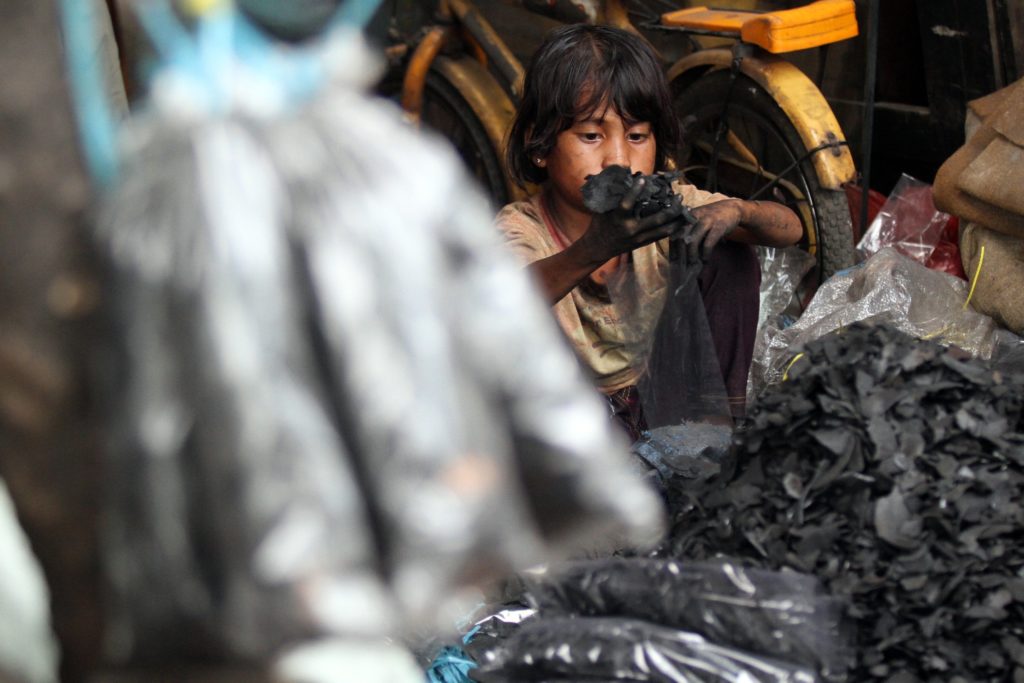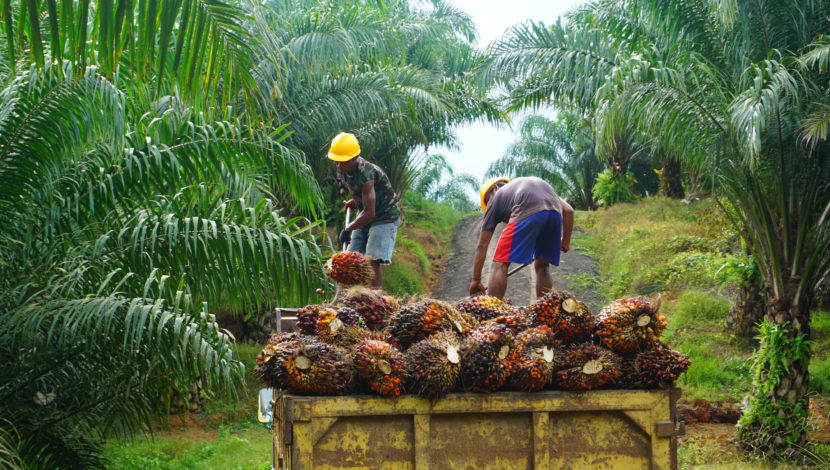Palm oil, the world’s most versatile vegetable oil, is a key ingredient in countless products, from processed foods to cosmetics and even biodiesel (Tullis, 2019). Its multipurpose qualities have led to a high worldwide demand. While good for the economy, its widespread cultivation has led to terrible circumstances for some children in Indonesia who are pressured to work in the industry.
The palm oil industry in Indonesia
As the world’s biggest palm oil producer, Indonesia supplies 57% of the global demand for palm oil (ILO, 2023). The palm oil industry is the largest employer in Indonesia. It currently employs about 8 million people and contributes between 9-17% of the country’s GDP (Benazir, 2024).
While this has raised the incomes of locals, especially those living in rural areas, the use of child labour has subsequently increased. The high demand for palm oil has led to supply chain pressure to minimize labour costs thereby resulting in the exploitation of child labour to keep costs low and profits high.
Child labour in Indonesia
Child labour has been an ongoing issue in Indonesia. While the Indonesian government requires all industries to conform to child labour laws, it is reported that around 1.01 million children participated in child labour in 2023 (Siahaan, 2024). While this number decreased by around 3.5% since 2021, the child labour rate remains higher than the pre-pandemic level.
Poverty and limited access to education are key factors driving child labour, especially in rural and impoverished regions, where a significant number of children balance work and school. Insufficient enforcement of child labour laws further exacerbates the problem. Child labour is prevalent in informal sectors like agriculture, which is difficult to monitor and regulate. Inspectors often lack the authority to inspect private palm oil farms, where many child labour violations occur.
Effects of child labour in the palm oil industry on children
Child labour severely impacts children’s physical, emotional, and intellectual development. Many child labourers face exploitation, including forced labour and abuse, with lifelong health and economic consequences. The palm oil industry has used children as young as 8 years old to harvest and collect loose palm fruits (Amnesty International, 2016).
Children are involved in many other activities within palm oil plantations, including applying fertilizers and pesticides, often without proper protective equipment, carrying heavy loads and operating heavy machinery (Benazir, 2024). These dangerous activities can result in physical injuries and other serious health problems such as stunted growth, respiratory issues, skin conditions, and long-term health problems. In addition to physical impacts, child labour demands cause children to miss school, thereby, hindering their educational level and perpetuating cycles of poverty.
International law should protect children from child labour
Several international legal instruments protect children from labour exploitation. The International Labour Organization (“ILO”) Convention No. 138 (Minimum Age Convention, 1973) establishes the minimum age for employment, generally set at 15 years, with stricter rules for hazardous work, which is typically set at 18 years. The ILO Convention No. 182 (Worst Forms of Child Labour Convention, 1999) focuses on eliminating the worst forms of child labour, such as slavery, trafficking, forced labour, and hazardous work that endangers the wellbeing of children.
These conventions are both supported by the United Nations Convention on the Rights of the Child (“CRC”), specifically Article 32, which recognizes the right of children to be protected from economic exploitation and work that may interfere with their education or harm their development (United Nations General Assembly, 1989).
Indonesian child labour laws
Indonesia was the first country in Asia to ratify the ILO’s core Conventions and previously ratified the CRC in 1990 (ILO, 2021). These commitments are reflected in national legislation, such as Act No. 20 of 1999 and Act No. 1 of 2000, as well as in their National Action Plan for the Elimination of the Worst Forms of Child Labor (Minister of Manpower, 2022). The minimum age of employment in the country is set at 15 years old, and national laws prohibit several conditions that are classified as the worst forms of child labour.

Despite the implementation of laws aimed at protecting children from labour, certain legal provisions in national laws are not fully aligned with international standards (DOL, 2022). For example, Indonesia’s prohibitions against child trafficking require the use of threats, force, or coercion to be established for the crime to have occurred, which is inconsistent with international standards (ILAB, 2023). As a result, Indonesian law does not prohibit children from partaking in activities that constitute “light work”.
Handling the alarming rates of child labour
Even with Indonesia’s ratification of the ILO conventions and the CRC, along with the implementation of domestic laws to safeguard children from child labour, the palm oil industry continues to resort to child labour in Indonesia.
In response to these issues, the Indonesian government has increased funding for labour inspections and social rehabilitation programs for child survivors of human trafficking (ILAB, 2023). The Ministry of Manpower allocated $150,000 for social rehabilitation programs and increased the labour inspectorate budget from $15.1 million in 2022 to $22.7 million in 2023.
Despite these measures, challenges persist in effectively eradicating child labour. In addition to inconsistent national legislation, the Indonesian government continues to struggle with the enforcement of its labour laws. The Ministry of Manpower lacks sufficient financial resources and personnel to enforce child labour laws nationwide.
How government can improve enforcement
Child labour is an important issue that must be handled by the Indonesian government. Beneficial actions include solidifying the enforcement of child labour laws, ensuring effective oversight of supply chains, offering free access to quality education everywhere in the country and providing social and economic support. An additional important action that must be taken is holding corporations and producers responsible by ensuring compliance with labour standards and promoting ethical supply chains.
How consumers can drive change in the industry
While issues of this urgency are often left to governments to handle, consumers can also influence change in this area. Consumers can help reduce the use child labour in palm oil production by choosing fair trade-certified products, which ensure fair wages and treatment for adult workers, enabling families to care for their children.
Paying attention to the provenance of ingredients is important. Consumers should look out for palm oil sourced from regions like Indonesia and Malaysia, which often face labour challenges. Supporting companies that actively invest in and collaborate with sourcing communities can create positive change and reduce the reliance on child labour.
Many companies, including large global brands, claim to use “sustainable palm oil,” but investigations reveal ongoing exploitation and appalling abuses in their supply chains (Amnesty, 2016). These findings expose the gap between corporate promises and the harsh realities, challenging consumers to scrutinize brands more closely. As a result, consumers must be informed and attentive to determine whether a product is ethically sourced.
Child labour in Indonesia’s palm oil industry remains an important concern, with children continuing to engage in hazardous tasks that compromise their health and development. Resolving child rights issues, such as child labour, should be a priority in protecting children’s rights and enabling them to reach their full potential for healthy personal and societal development.

Humanium is dedicated to protecting children’s rights worldwide and helping to eradicate child labour across the globe. If you want to contribute to our cause, please consider making a donation, volunteering, or becoming a member.
Written by Kathleen Tereposky
Bibliography:
Amnesty International. (November 30, 2016). Palm Oil: Global brands profiting from child and forced labour. Accessed from Amnesty International at https://www.amnesty.org.au/palm-oil-brands-profiting-child-forced-labour/#:~:text=The%20world’s%20most%20popular%20food,according%20to%20our%20latest%20research, accessed on January 12, 2025.
Benazir, C. (June 12, 2024). Protecting Childhood: Navigating Child Labor Laws in Indonesia’s Palm Oil Industry. Accessed from Palmoil.io at https://blog.palmoil.io/protecting-childhood-navigating-child-labor-laws-in-indonesias-palm-oil-industry/, accessed on January 12, 2025.
Bureau of International Labor Affairs (“ILAB”). (2023). Findings on the Worst Forms of Child Labor – Indonesia. Retrieved from the U.S. Department of Labor at https://www.dol.gov/agencies/ilab/resources/reports/child-labor/indonesia, accessed on January 12, 2025.
Department of Labor (“DOL”). (2022). 2022 Findings on the Worst Forms of Child Labor: Indonesia. Retrieved from the Bureau of International Labor Affairs at https://www.dol.gov/sites/dolgov/files/ILAB/child_labor_reports/tda2022/Indonesia.pdf, accessed on January 12, 2025.
https://www.ilo.org/publications/roadmap-towards-child-labour-free-indonesia-2022, accessed on January 12, 2025.
International Labour Organization (“ILO”). (2023). Strengthening Social Compliance in Indonesia’s Palm Oil Sector | International Labour Organization. Retrieved from the International Labour Organization at https://www.ilo.org/projects-and-partnerships/projects/strengthening-social-compliance-indonesia%E2%80%99s-palm-oil-sector, accessed on January 12, 2025.
International Labour Organization (“ILO”). (June 14, 2021). Indonesia is committed to eliminate child labour in the country. Retrieved from the International Labour Organization at https://www.ilo.org/resource/news/indonesia-committed-eliminate-child-labour-country, accessed on January 12, 2025.
International Labour Organization. (17 June 1999). C182 – Worst Forms of Child Labour Convention, 1999, No.182. Retrieved from the International Labour Organization at https://www.ilo.org/media/322486/download, accessed on January 12, 2025.
International Labour Organization. (26 June 1973). C138 – Minimum Age Convention, 1973, No.138. Retrieved from the International Labour Organization at https://www.ilo.org/international-programme-elimination-child-labour-ipec/what-child-labour/ilo-conventions-child-labour, accessed on January 12, 2025.
Minister of Manpower, Republic of Indonesia. (2022). Roadmap Toward a Child Labour-Free Indonesia in 2022. Retrieved from the International Labour Organization at https://www.ilo.org/publications/roadmap-towards-child-labour-free-indonesia-2022, accessed on January 12, 2025.
Siahaan, M. (May 29, 2024). Number of child labor Indonesia 2019-2023. Retrieved from statista at https://statista.com/statistics/1251512/indonesia-total-child-workers/, accessed on January 12, 2025.
Tullis, P. (February 19, 2019). How the world got hooked on palm oil. Accessed from the Guardian at https://www.theguardian.com/news/2019/feb/19/palm-oil-ingredient-biscuits-shampoo-environmental, accessed on January 12, 2025.
United Nations General Assembly. (20 November 1989). Convention on the Rights of the Child (“CRC”). United Nations, Treaty Series, vol. 1577 at art 32. Retrieved from the United Nations Office of the High Commissioner for Human Rights at https://www.ohchr.org/en/instruments-mechanisms/instruments/convention-rights-child, accessed on January 12, 2025.


